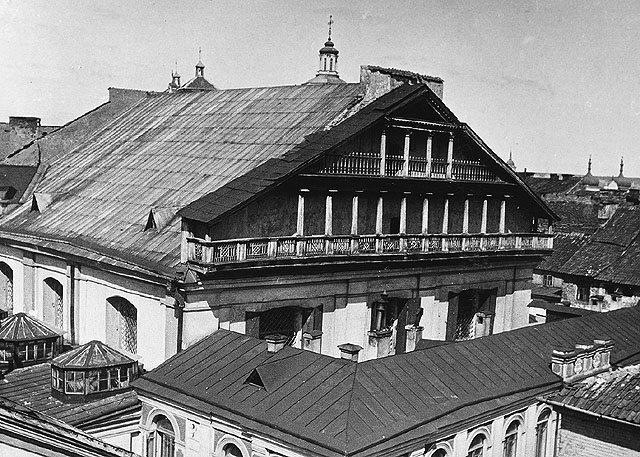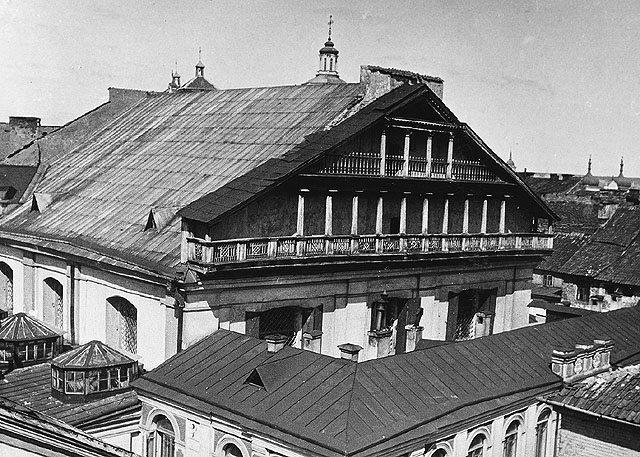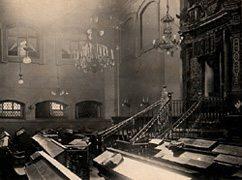The Great City Synagogue of Vilna, Lithuania
Haim F. Ghiuzeli
The Great City Synagogue of Vilna was built of stone from 1630 to 1633, after permission was given to build a stone structure to replace the Old Synagogue. In 1635 the synagogue was pelted with stones by rioters, the interior was destroyed and all it contained was looted.
It was rebuilt in Renaissance-Baroque style in the schulhof, and in the course of time it was surrounded by a complex of some twenty synagogues, among them an old wooden 15th century synagogue, rebuilt between the 18th and 19th century, prayer-houses of the artisans’ guilds, a beth-midrash, a mikveh, the community center, the famous Strashun rabbinical library; the prayer-house of Rabbi Eliyahu ben Solomon Zalman, The Gaon of Vilna (1720-1797), built in 1800. The whole complex became a great Talmud Torah study center and the heart of the movement of the Mitnaggedim.
The Great City Synagogue was a high one-story building with a slanted roof. In 1800 a gable with a two-tiered wooden portal was added on the western side. The entrance, with a vestibule and the “pillory” was located on the northern side of the building. The main prayer hall was square and could hold 300 people. It had a three-tiered bimah in the center, composed of twelve pillars (some say it was the gift of Rabbi Yehuda Ben-Eliezer), and it was surrounded by four pillars in Tuscan style, supporting the dome. The two-tiered Holy Ark on the eastern wall was a splendid structure, with gilded woodcarvings, representing plants, animals and Jewish symbols, with a double-headed eagle on top. On both sides of the Holy Ark there were two-story structures, serving as the women’s sections, connected to the prayer hall by little windows. Hanging from the walls and ceilings there were numerous bronze and silver chandeliers. The synagogue contained a valuable collection of ritual objects. The building was repaired in the 19th century. In 1846, when Moses Montefiore (1784-1885) and his retinue visited the synagogue, the treasurers distributed entrance tickets to the masses of people.
The synagogue was partly destroyed by the Germans during World War 2. After the war the synagogue and the whole schulhof complex were destroyed by the Soviet authorities and replaced by housing blocks.
Three original pieces from the Great Synagogue of Vilna survived the destruction quite miraculously and are now on display at the Vilna Gaon Jewish Museum: a door of the Holy Ark, a reader’s desk (Omed), and a bas-relief with the Ten Commandments.

The old synagogue in Vilna, Lithuania, built in 1572. Photograph taken by the German army during WW I. The Oster Visual Documentation Center. ANU - Museum of the Jewish People, Courtesy of Polska Akademia Nauk, Warsaw

The Holy Ark of the great Synagogue, Vilna, 1920-1930. The Oster Visual Documentation Center, ANU - Museum of the Jewish People. Courtesy of Leibl Korinsky, Israel

